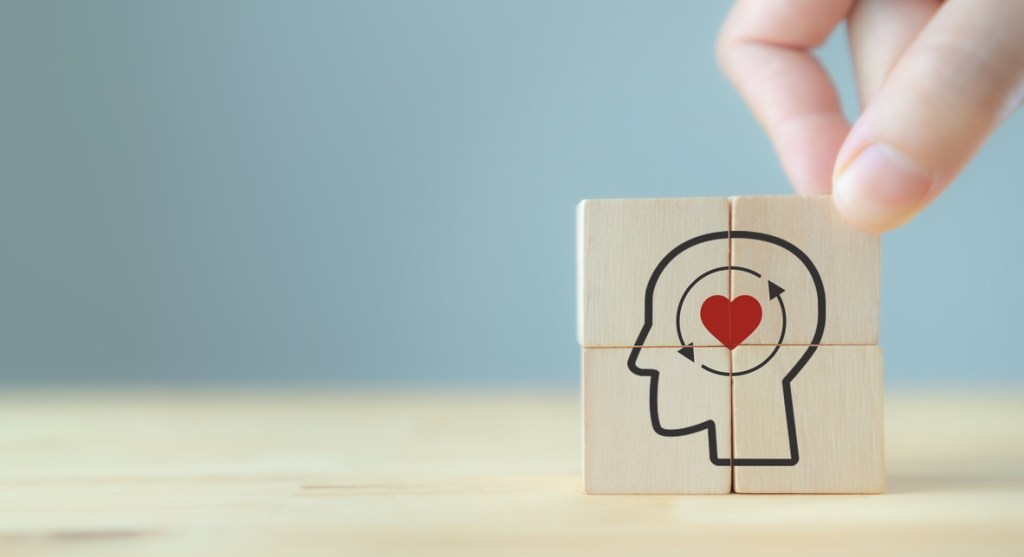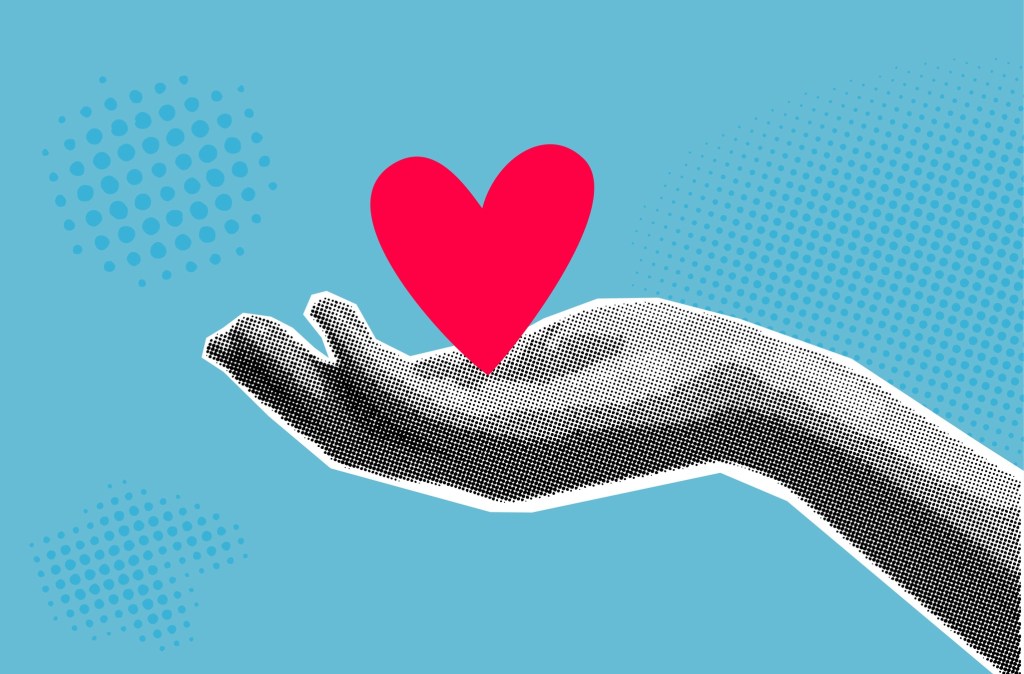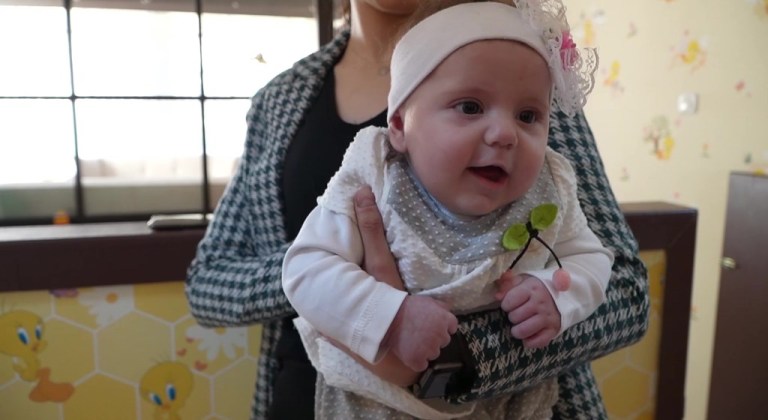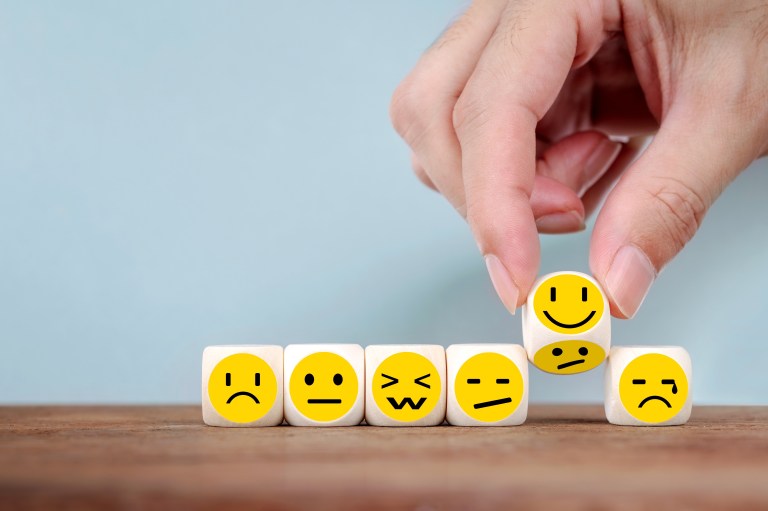From about the age of 3 onward, the typical human being has the capacity to experience the emotional state of another person. That capacity is empathy, and it’s critical to our well-being — both as individuals and as a collective.
“In general, empathy is a powerful predictor of things we consider to be positive behaviors that benefit society, individuals, and relationships,” social psychologist Karina Schumann explained in an article for the American Psychological Association. “Scholars have shown across domains that empathy motivates many types of prosocial behaviors, such as forgiveness, volunteering, and helping, and that it’s negatively associated with things like aggression and bullying.”
But empathy isn’t just about feeling sad when someone else feels sad. The opportunity to empathize presents itself in myriad aspects of life: when we argue about politics, when we feel frustrated at work, when we’re waiting in line at the post office. It may help us cooperate better with others, derive more satisfaction from our romantic relationships, and adopt more positive attitudes toward stigmatized groups. In a larger sense, it can spur us to action to improve the world.
As a society, more empathy may also aid us in bridging the political divide. “Empathy is a democracy’s job,” sociologist Sherry Turkle told CNN, adding: “At the end of empathy, people are not supposed to agree with each other. You’re supposed to have listened to each other, and be willing to share a bit of road with another person [and] find a way to make peace so [we] can live in real life with each other in a democratic community.”

Simply telling yourself to stop and see things from someone else’s point of view can be immensely helpful for both parties in the moment, but understanding empathy on a deeper level may have more profound and far-reaching effects. Read on to learn about three distinct types and ways to increase your own capacity.
Three Types of Empathy
Psychologist Paul Ekman, best known for his pioneering work on facial expressions in relation to emotion, delineated the three main types of empathy.
Cognitive empathy refers to intellectually understanding what or how a person is feeling. For example, you see someone’s bag of groceries break on their way back to their car from the store, with everything spilling onto the parking lot, and you quickly ascertain that they likely feel embarrassed and frustrated. Cognitive empathy falls under the same umbrella as perspective-taking, or the ability to see something from someone else’s point of view.
Emotional empathy refers to actually sharing the emotions that someone else is going through. So, you see the person’s groceries fall, and you yourself feel a sense of frustration and embarrassment. Additionally, you feel a level of distress that the person is having this unfortunate experience. This is sometimes called “affective empathy.”
Compassionate empathy refers to not just understanding and experiencing someone else’s pain, but seeking to improve the person’s situation to lessen their negative feelings. I.e., you desire to help that person pick up their groceries, and offer them one of the reusable bags you brought to the store. Compassionate empathy is also called “empathic concern.”
These three types of empathy are available in different people to different degrees. Someone may be very good at cognitive empathy but not at emotional. Someone else may have no trouble feeling what another person is feeling (emotional empathy), but less of an inclination to take action to alleviate their suffering (compassionate empathy).
Certain situations may not call for all three. If you find yourself enraged at a friend for their take on a social issue, it may be helpful to activate your cognitive empathy so you intellectually understand how their circumstances influence their choices. When a natural disaster or tragedy occurs, it may be most beneficial to invoke your empathic concern.
“Ekman calls compassionate empathy a skill, the acquired knowledge ‘that we’re all connected,’” psychologist Daniel Goleman wrote for Berkeley’s Greater Good Science Center. “This can lead to outbursts of what he calls ‘constructive anger.’ In other words, reacting negatively to injustice or suffering can motivate us to work with others to make the world a better place.”
How to Increase Your Empathy
Empathy is not a fixed trait; it’s more like a muscle you can build with the right exercises.
Start With a Growth Mindset
To the previous point, believing you can improve — taking a growth mindset — may aid you in the improving. “People who believe that empathy can grow try harder to empathize when it doesn’t come naturally to them, for instance, by empathizing with people who are unfamiliar to them or different than they are, compared to people who believe empathy is a stable trait,” social psychologist Erika Weisz explained to the APA.
Listen to Other Perspectives
As with many interpersonal skills, actively listening, without focusing on your own thoughts and emotions, can increase your capacity for empathy. And listening to perspectives you might not normally hear is a great way to turbocharge this.

“Paying attention to other people allows you to be moved by their experiences,” Sara Hodges, a professor of psychology at the University of Oregon, told the APA. “Whether you are actively perspective-taking or not, if you just pay more attention to other people, you’re likely to feel more concerned for them and become more involved in their experiences.”
It can be difficult to listen to other perspectives without feeling that your own beliefs are being threatened, but the more you do it, the easier it becomes.
“The foundation of empathy has to be a willingness to listen to other peoples’ experiences and to believe they’re valid,” added psychology professor Raymond Mar. “You don’t have to deny your own experience to accept someone else’s.”
Think Back
When someone is having an emotional reaction that differs from how you might react in the same situation, it may be hard to jump from cognitive empathy to emotional. In these circumstances, recalling a time you did feel that way (regardless of the event) can get you closer. In an article for Inc., Justin Bariso quotes Hendrie Weisinger, author of Emotional Intelligence at Work.
“If a person says, ‘I screwed up a presentation,’ I don’t think of a time I screwed up a presentation — which I have [done] and thought, no big deal. Rather, I think of a time I did feel I screwed up, maybe on a test or something else important to me. It is the feeling of when you failed that you want to recall, not the event.”

Try Second-Guessing Yourself
It can be an uncomfortable experience to be wrong, especially about something we believe in strongly — so uncomfortable that we often go out of our way to avoid the possibility. But openness and learning are key to building more empathy, and that starts with questioning our assumptions and automatic reactions.
“As scientists, we second-guess our assumptions all the time, looking for alternative explanations,” Hodges told the APA. “We need to do that as people, too.”
Empathy as an Acronym
There is often a disconnect between what we’re feeling and what other people “think” we’re feeling, something that has led to plenty of misunderstandings and arguments between friends and strangers. That’s why learning how to effectively communicate our empathy to others, rather than simply feeling it, can be helpful in strengthening trust and inviting vulnerability in relationships.
Dr. Helen Riess, an associate professor of psychiatry at Harvard Medical School and author of The Empathy Effect, focuses much of her work on helping health care professionals practice more empathy with patients. But the program she developed for that purpose may also benefit the layperson: It’s called EMPATHICS, and per Berkeley’s Greater Good Science Center, its steps follow the acronym EMPATHY:
Eye contact
Muscles in facial expressions
Posture
Affect
Tone
Hearing
Your response
Click here for an explanation of each step.
Read (Good) Fiction

This one may not be the fastest way to increase your empathy, but reading fiction has so many other boons — research points to it driving critical thinking skills and boosting emotional vocabulary — that it can’t hurt to recommend it in this context as well.
A 2013 study found that people who read fiction and were emotionally transported into the story demonstrated increased empathy as compared to those who read non-fiction. That means to reap the benefits, you’ve got to find a book that truly invites you into the world and feelings of its characters. Check out these recommendations.
RELATED: “You Don’t Have to Change”: Gretchen Rubin Shares 4 Practical Lessons for Leading a Happier Life











